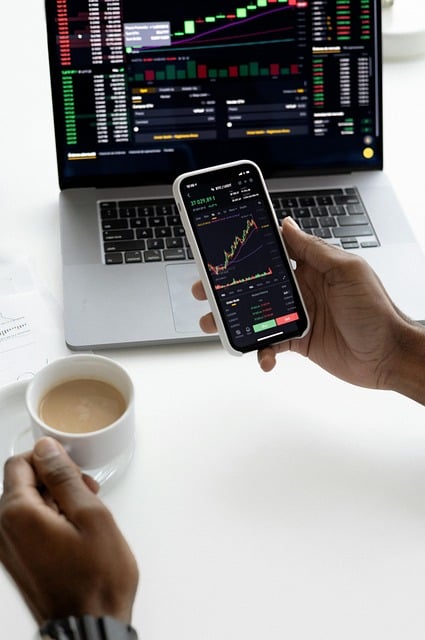The Rise of Bot Traders: Navigating the Future of Automated Trading
In the fast-paced world of financial markets, technological advancements continue to transform how trading is conducted. Among these advancements, bot traders have emerged as a revolutionary force, reshaping the landscape for both retail and institutional investors. In this article, we explore the phenomenon of bot trading, its benefits, challenges, and its impact on Canadian markets.

What is Bot Trading?
Bot trading refers to automated trading systems that execute trades based on pre-programmed algorithms. These algorithms analyze market conditions, identify trading opportunities, and execute orders without human intervention. The rise of bot trading has made it accessible to both amateur and professional traders, creating a more dynamic trading environment.
How Does Bot Trading Work?
Trading bots operate using sophisticated algorithms that can be customized to suit individual trading strategies. These bots can be programmed to analyze various market indicators, such as price movements, volume, and news sentiment. The process typically involves the following steps:
- Data Collection: Trading bots collect and analyze vast amounts of historical and real-time market data.
- Signal Generation: Based on the analysis, the bot generates buy or sell signals depending on predefined criteria.
- Order Execution: Once a signal is generated, the bot executes the trade automatically on behalf of the trader.
- Risk Management: Many bots incorporate risk management strategies to secure profits and minimize losses.
Types of Trading Bots
There are several types of trading bots available, each catering to different trading goals and strategies:
- Market Making Bots: These bots provide liquidity by continuously placing buy and sell orders to profit from the bid-ask spread.
- Arbitrage Bots: They exploit price discrepancies between exchanges, executing trades simultaneously to lock in profit.
- Trend-Following Bots: These bots analyze market trends and follow them, taking positions based on momentum indicators.
- Mean Reversion Bots: These bots operate under the assumption that prices will revert to the mean over time, identifying overbought or oversold conditions.
The Appeal of Bot Trading
The growing popularity of bot trading can be attributed to several factors:
- 24/7 Trading: Bots can operate around the clock, capitalizing on opportunities even when traders are asleep.
- Emotionless Trading: By removing human emotion from trading decisions, bots can execute trades with discipline and consistency.
- Enhanced Efficiency: Bots can analyze vast amounts of data and execute trades in milliseconds, significantly outperforming manual trading.
- Access to Complex Strategies: Retail traders can implement sophisticated trading strategies that would be challenging to execute manually.
Challenges of Bot Trading
Despite its numerous advantages, bot trading is not without challenges. It is essential for traders to understand the potential pitfalls before venturing into this automated trading world.
Technical Risks
Bot traders face several technical risks that can result in significant financial losses:
- System Failures: Technical glitches or server outages can prevent a bot from executing trades as planned.
- Latency Issues: Delays in data processing can lead to missed trading opportunities or improper execution.
- Security Vulnerabilities: Unauthorized access to a trader's account or the bot's infrastructure can lead to hacking incidents.
Market Risks
Market conditions can also pose significant risks for bot traders:
- Highly Volatile Markets: Sudden price swings can result in sharp losses if a bot's strategy is not able to adapt quickly enough.
- Regulatory Changes: Changes in regulations can impact bot trading strategies and their profitability.
The Need for Oversight
While automation offers many benefits, it is crucial that traders maintain oversight and control over their bot trading activities.
- Regular Monitoring: Periodic evaluation of the bot's performance is essential to ensure it aligns with the trader's goals.
- Manual Intervention: Being able to manually intervene in trades during extreme market conditions is vital.
Bot Trading in Canada
As the popularity of bot trading continues to grow globally, Canada is no exception. Canadian traders are increasingly adopting bot trading strategies, with both positive and negative consequences.
The Landscape of Bot Trading in Canada
Canada's regulatory environment supports innovative trading practices, making it an attractive market for bot traders. Key developments include:
- Regulatory Clarity: Canadian regulators have established a clear framework for the operation of automated trading systems, promoting transparency and fairness.
- Access to Technology: Canadian trading platforms are increasingly offering integrated tools for bot trading.
The Impact of Bot Trading on Canadian Markets
The growth of bot trading in Canada influences various aspects of the financial markets:
- Increased Liquidity: Bot traders contribute to overall market liquidity, improving trading conditions for all participants.
- Market Efficiency: As bot traders exploit inefficiencies, market prices reflect true value more effectively.
The Future of Bot Trading in Canada
As technology continues to advance, the future of bot trading in Canada looks promising. However, it is vital for stakeholders to foster responsible growth in this area.
In my opinion, the key to a successful future in bot trading lies in balancing automation with human oversight. While bots can enhance efficiency and profitability, the need for experienced human judgment will never diminish.

Getting Started With Bot Trading
For those interested in bot trading, the entry process can be relatively straightforward. Here are some essential steps to consider:
1. Choose a Reliable Trading Bot
Selecting the right trading bot is crucial. Factors to consider include:
- Reputation: Research the reputation of the developer and community feedback.
- Performance: Analyze the bot's historical performance and strategy.
- Customization: Ensure the bot offers customizable features to suit your trading style.
2. Test in a Risk-Free Environment
Before deploying any bot with real money, consider testing it in a simulated environment. This practice allows you to assess the bot's behavior without financial risk.
3. Start Small
When you're ready to trade with real money, consider starting with a small investment. This approach minimizes risk while allowing you to gain experience with the bot's performance under live market conditions.
Final Thoughts
In conclusion, bot trading represents a significant evolution in financial markets. With its potential to enhance efficiency and reduce human error, it is an exciting prospect for traders in Canada and around the globe. However, the accompanying risks and challenges must not be underestimated.
As the landscape of automated trading continues to develop, it is essential for traders to remain vigilant, regularly monitor performance, and adapt strategies as market conditions change. The future of trading is undoubtedly intertwined with technology, and those who can harness its power responsibly will have a competitive edge.